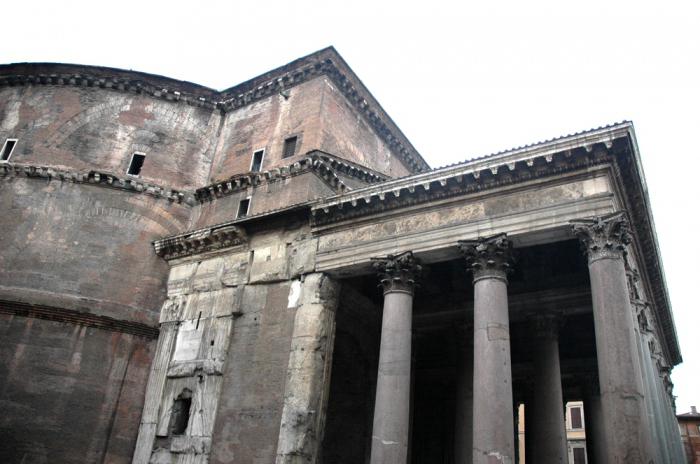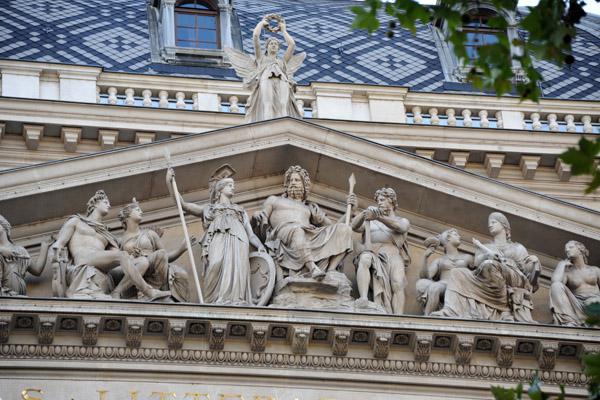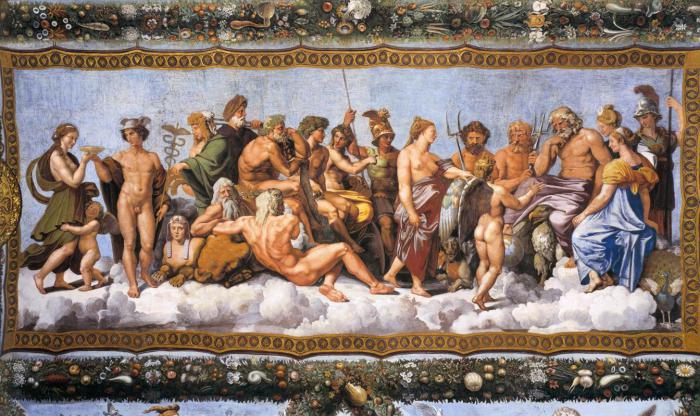The word "pantheon" has several definitions, one way or another connected, in this article all its meanings are analyzed in detail.
What is a pantheon?
The word "pantheon" comes from the Greek pan ("all") and theos ("god"), which is the common name for all gods belonging to any religion or mythology. The ancient Greeks and Romans called the temple dedicated to all deities. Also, such a definition is suitable for designating a monumental building, a structure where outstanding personalities rest. Most often, this word is used to denote a group of gods of a particular mythology (Sumerian, Greek, Roman, Egyptian, Slavic and others). The beliefs of ancient civilizations, in contrast to more modern religions, are characterized by a large number of deities belonging to different spheres of society.
Pantheon in Rome
The question “what is the pantheon” in Rome will most likely be answered by “the temple of all gods”. This is a unique attraction of the modern capital of Italy, an architectural masterpiece of ancient Rome. It was erected during the reign of Emperor Hadrian in 126 AD. e., during the last heyday of the Empire. The Roman pantheon was a reconstruction of the "temple of all gods", which was built by Mark Agrippa. His name as the first builder is immortalized on the building. This is the largest ambitious dome church of that era, and until the 19th century it could not be surpassed. The Pantheon in Rome (photo presented in the article) is an example of the domed architecture of temples. Many tried to copy it, but could not get around it in scale and grandeur. He looks very massive. Monolithic blind walls around the perimeter pass into the front portico, consisting of two rows of giant columns, entirely carved from granite. The dome of the Pantheon is a marvel of engineering at that time. It is made in the form of a regular hemisphere, its diameter is 43 m, the height of the dome is equal to the height of the walls. In the center of the dome is the so-called Pantheon eye - a huge round window with a diameter of 9 m. It is the only source of light in the rotunda - the main hall of the Pantheon. Along the marble walls of the rotunda there are niches in which were originally statues of supreme Roman deities, and now - burials of famous personalities and altars. When Rome adopted Christianity, the Pantheon was abandoned, and the gilded bronze coating of the dome and portico was taken to other temples. Later, in 609 AD e., the Roman Pantheon was given under the Christian temple. Since that time, prominent cultural and art workers, as well as members of royal families, have been buried in it. There is, for example, the tomb of Raphael, the first king of Italy, Victor Emanuel II and others.

Gods of ancient rome
One version of the answer to the question: “What is a pantheon?” - this is a set of deities of a particular mythology, in this case we will talk about Roman. After all, it was in honor of the gods of antiquity that such a miracle was built as the Roman Pantheon, which was mentioned earlier. The Romans were incredibly practical and adopted the best from various peoples, neighboring or conquered. They adopted the gods of the main pantheon from the ancient Greeks and, renaming them, inscribed them in their main dogmas. Unlike the ancient Greek, the ancient Roman deities did not have their Olympus, they are often depicted as symbols. Jupiter, Mars and Quirin constituted the main triad of the pantheon, reflecting the three main functions of society: religious priestly, military and economic. In addition to them there was a host of other gods, lower deities and spirits. Various gods patronized all spheres of human life and the environment. There were, for example, the gods of the seas, forests, hunting, fertility, agriculture, cattle breeding, a home; the gods who protected life, helped in childbirth, took care of children, kept marriage and many others. Of the most famous: Janus - the creator of the world and the human race, Jupiter - the supreme, the god of thunder and lightning, the patron saint of emperors, Pluto - the god of death and the underworld, Neptune - the god of the seas and the entire body of water, Volcano - the patron of the blacksmith craft and the god of fire, Mars is warlike, although it was originally a god of fertility. It is believed that he is the father of Romulus and Remus, the founders of Rome, therefore he is recognized as his protector and patron. Also known are Mercury, Minerva, Venus, Bacchus, Phoebus, which were part of the main pantheon of the Roman gods.

Ancient Greece
In ancient Greek mythology, a very important component is a peculiar and intricate genealogy. The chronological order of events is also important. Initially, there was Chaos as the foundation of the Universe, from which with the help of Eros Uranus and Gaia (heaven and earth) appeared, they became spouses. From them were born giants and cyclops, whom Uranus cast into Tartarus. Next came the titans, the most famous of which: Themis (goddess of justice), Mnemosyne (goddess of memory), Ocean, Rhea and Kronos, who began to rule the world and married Rhea. According to the prophecy, his own children were to overthrow him, so he swallowed all his children born. But his wife saved the younger, Zeus, whom she hid. When Zeus grew up, he forced his father to return the other swallowed children. Then there was a war between the gods and the titans, in which the giants and cyclops, whom he returned from Tartarus, helped Zeus and other gods. Zeus became the supreme god of heaven, thunder and lightning, dominating all things. Together with his brothers and sisters, he lived on the sacred Mount Olympus. The Greek pantheon consists of twelve major Olympic gods: Zeus himself, Poseidon (god of the seas), Hera (his wife, goddess of marriage and family), Hades (god of the kingdom of the dead), Ares (god of war), Aphrodite (wife of Ares, goddess of love and beauty), Athena (goddess of wisdom), Demeter (goddess of fertility), Hephaestus (god of blacksmiths and artisans), Artemis (goddess of hunting), Hermes (god of trade and eloquence), Dionysus (god of winemaking). In addition to them, there are also other deities, spirits, nymphs.

Conclusion
This article provides a detailed answer to the question: “What is a pantheon?” - on its main examples. Of course, in addition to the Greek and Roman pantheons, there are also Egyptian, Sumerian, Slavic and many others in the cultures and mythologies of various peoples. They are worthy of study and close attention, however, a separate article should be devoted to their detailed analysis.